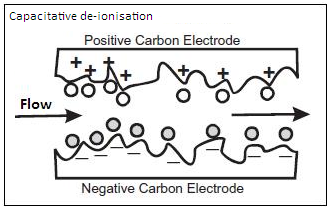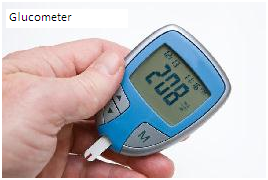Scrubbing water clean
-S. Ananthanarayanan
Water’s capacity as a cleaning agent makes water itself a host to contaminants that are difficult to remove, says S.Ananthanarayanan.
Industry, pollution and the growing population are increasing both the demand and the scarcity of clean water. While river-fed sources are getting less accessible, ground water is also sinking deeper or getting contaminated. Conserving and reusing water
has become vital and technology to turn bad water to good has become more important than ever.
Marc Andelman, Massachusetts based inventor, Prof Tony Cass from Imperial College, London and Prof Sung Jae Kim from Seoul National University presented three new, nano technology based solutions for extracting potable water from inferior sources, at the
8th India Nano meet organised by the S&T Promotion Society of the Govt of Karnataka at Bengaluru on 8th March. The packed audience included industrialists, startups and students and Prof T Pradeep of IIT, Chennai, who conducted the meeting, pressed for emerging
technology to be picked up and put to use, for the benefit of the country and the world.
Capacitative de-ionisation
Marc Andelman’s innovation is an improvement of the method called capacitative de-ionisation, or CDI, where a pair of oppositely charged surfaces, the electrodes, fish out contaminants, mainly salt, from water which is made to flow between the charged
plates. The voltage used is low, and there is no current between the surfaces, but dissovled contaminants, which are split in the water medium into oppositely charged halves, called ‘ions’, drift to opposite ends, till the ends collect full charge and the
drifting of ions stops. While the water that flows through got purified when the charge was on, the surfaces can now be discharged, to release a concentrate of contaminants for disposal. CDI, which extracts dissolved contaminants, is energy efficient, compared
to other methods like distillation or the now common reverse osmosis (RO), which work the other way about, extracting water from a salt solution.

Marc explained that the material of the electrodes had to be porous, so that there was high surface area, and greater capacity to collect charge for the same voltage applied. A limitation of the basic design, however, was that when charged ions of the
contaminant piled up very near the electrodes, oppositely charged ions were also inserted into the region just beyond, a region called the diffuse layer, and this reduces the efficiency of extraction of contaminants. A first improvement has hence been to insert
an ‘ion exchange membrane’ which would not impede the movement of the contaminant ions, but acts as a barrier to the counter-current of opposite charges. This did improve efficiency, but the membrane is expensive and takes space in the water channel.
Mark’s innovation was to replace the membrane by directly coating the electrodes with a material which contains charged components that get drawn, half towards and half away from the charge on the electrodes. These separated charges create a layer that
behaves like the ion exchange charge barrier in keeping down the counter-current of charges being released from the electrodes. This treatment, of creating a ‘polarised electrode’, however, is a low cost procedure and the electrodes themselves are nano-porous
carbon, which could come from burnt coconut shells, Marc said.
Measuring contamination
Prof Tony Cass, chemical biologist, explained that arsenic poisoning of ground water, which is notorious in Bangla Desh, was in fact a problem the world over. And the great difficulty in its management was the complexity of detection and measurement. It
was hence a challenge to monitor large numbers of water borings, particularly as arsenic levels could change within a very short period of time. “You cannot manage anything, till you can measure it,” Prof Cass said, citing a remark made about air pollution
in the city of London
Prof Cass said the current methods of measuring sugar levels in blood and urine of diabetics became an example to emulate in assessment of arsenic levels. Testing for sugar used to be slow and cumbersome 30 years ago, but it could now be done very easily,
and fast, with a hand-held device by the patient herself. The secret of the advance was the discovery of an enzyme that reacted with glucose, and exclusively with glucose, to set free an electron, that formed a current which could be measured by a meter or
a counter. A light pin-prick to access the blood could then be automated to read out the glucose level, in a device that was now sold over the counter! And there is a strip of paper that can be dipped in urine and the colour shows the level of glucose.

Prof Cass, with his colleagues, Joanne Santini and Thomas Osborne, chanced upon a similar action of an enzyme that set electrons free while changing arsenic salts from one form to another. They have now devised a method to build a simple instrument, like
the glucometer for diabetics, which measures low levels of arsenic in water with good accuracy. “The device is not so good at high concentrations,” Prof Cass says, “but fortunately the area of interest is low contamination.”
Bio-inspiration
Prof Sung Jae Kim takes inspiration from coastal mangroves which flourish in salt, seawater, to devise ways of desalination as a source of fresh water, for human consumption or for irrigation. The current ways of large scale desalination are only distillation
or reverse osmosis, both of which are power intensive. It is hence attractive to desalinate without the use of power, except sunlight, maybe, like nature.
Mangroves
The process of osmosis is that when solutions of different concentration are separated by a semi-permeable membrane, which lets through the solvent but not the solute, the solvent is driven to pass from the lower concentration to the higher side. This
driving force, in fact, can support a higher column of greater concentration, which is what happens in a coastal fresh water well, which supports the pressure of salty sea water whose level is higher. In reverse osmosis, physical pressure which is greater
than the pressure of osmosis is exerted on the side of higher concentration, to drive the solvent, water in the case of brine, to the fresh water side.
The roots of coastal plants, which stand in salt water, are able to keep out the salt and take in fresh water, which then rises with the sap to the stem and leaves, using capillary forces. The work of Prof Sung Jae Kim and colleagues identifies the role
of capillaries, or very narrow channels, in attaining the separation of higher and lower concentrations, or an ‘ion concentration polarisation’, leading to an ‘ion depletion zone’ near nano-porous materials that are selectively permeable. A device based on
this effect has been found to achieve 90% reduction of salinity without an external power source. The group has carried out theoretical analysis and has come to conclusions of methods to commercialise the process.
Getting to the market
Prof T Pradeep, who moderated the event, spoke of the scale of the problem of water, which would soon, he said, dwarf other crises that humanity faces. A very low level of contamination, just one part in 1013, which works out to “one person in 10,000 times
the Indian population”, he said, renders water unfit for use. To purify water affordably and on a large scale was hence a priority. There was a case to create an institution to support research and to help ideas to be quickly commercialised, he said. But Marc
Andelman later observed that in the US, “there is zero R&D money in the USA for water tech, neither government nor corporate,” and he funded his own research by running an e-commerce side business!!
(Courtesy simplescience.in)